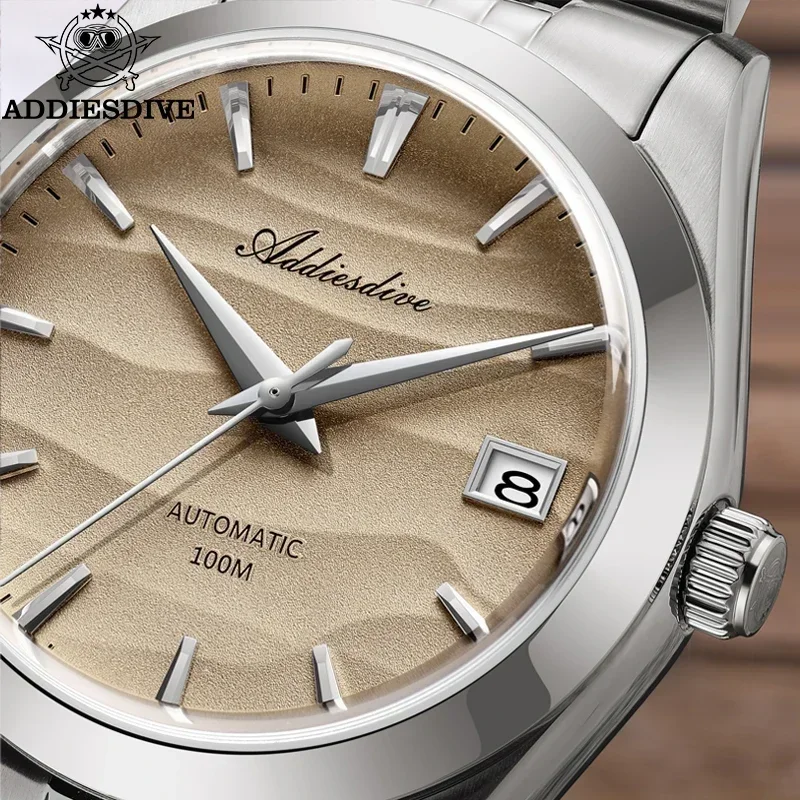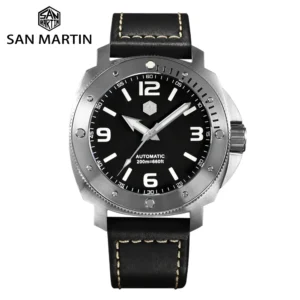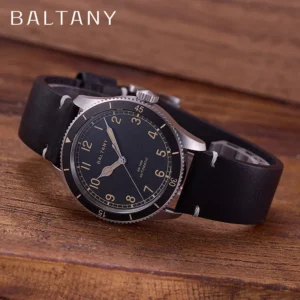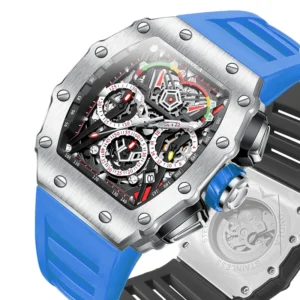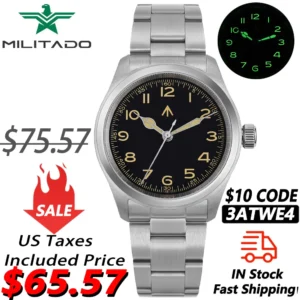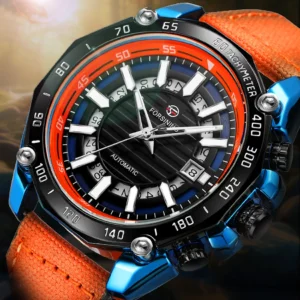Introduction: The Birth of Military Field Watches
When soldiers first strapped timepieces to their wrists instead of tucking them into pockets, they weren’t making a fashion statement—they were adapting to the brutal realities of combat. Field watches emerged from necessity on the battlefields of early 20th century conflicts, transforming from convenient accessories into essential military equipment that could mean the difference between a successful mission and disaster.
The transition from pocket watch to wristwatch format wasn’t merely about convenience. In the chaos of combat, fumbling with a pocket watch could cost precious seconds or expose a soldier’s position. The earliest field watches addressed fundamental battlefield needs: telling time accurately, surviving harsh conditions, and remaining legible in all situations.
What truly defines a field watch is its uncompromising focus on three core characteristics: durability to withstand combat conditions, legibility to provide instant time-reading in any circumstance, and utility that prioritizes function over form. These principles would guide the evolution of military timepieces through decades of conflict and technological advancement.
This article traces the remarkable journey of the military field watch from its humble beginnings in the trenches of World War I through its standardization in World War II, technological evolution during the Cold War, and its enduring influence on modern watch design. Through this evolution of military field watches, we’ll discover how these purpose-built instruments have transcended their utilitarian origins to become enduring symbols of reliability and purposeful design.
From Pockets to Wrists: The Trench Watches of World War I
The Birth of Combat Timekeeping
The muddy, chaotic battlefields of World War I catalyzed a transformation in how soldiers told time. Pocket watches, while elegant, proved dangerously impractical in combat. Coordinating artillery barrages, infantry advances, and other tactical maneuvers required split-second timing and hands-free operation. This urgent military necessity accelerated the adoption of the wristwatch, then considered primarily a woman’s accessory.
Early trench watches represented ingenious adaptations to battlefield conditions. Watchmakers and soldiers alike improvised by soldering wire lugs onto pocket watch cases, allowing them to be worn on leather straps. These early conversions maintained the pocket watch’s familiar dial layout but made it accessible with a quick glance rather than a risky fumble through uniform pockets.
Battlefield Innovations
The harsh realities of trench warfare quickly exposed the weaknesses of civilian timepieces. Watch manufacturers responded with innovations specifically addressing combat needs:
- Shrapnel guards and protective grilles over crystal faces
- Primitive waterproofing attempts using sealed cases and rubber gaskets
- Luminous dials painted with radium compounds for nighttime readability
- Reinforced glass crystals less prone to battlefield damage
Companies like Omega, Waltham, and Elgin produced early purpose-built trench watches that featured these combat-oriented modifications. The Omega “Officer’s Watch” from this era featured protective metal covers that could be opened to read the time, then closed to shield the crystal from damage—a direct response to the punishing conditions of frontline service.
These early adaptations laid the groundwork for what would eventually evolve from trench to field watches as we know them today. The lessons learned in the trenches—about legibility, durability, and functional design—would inform military watch specifications for decades to come, establishing design principles that remain relevant a century later.
WWII Standardization: The Rise of Iconic Military Field Watches
World War II represented a watershed moment in the history of field watches. The unprecedented global scale of the conflict demanded military timepieces in quantities never before seen—millions of watches were produced to military specifications across multiple theaters of war. More importantly, this period saw the formal codification of what constitutes a military field watch through rigorous standards that would influence watch design for generations.
The A-11: America’s Watch for Victory
The American A-11 specification produced what many consider the quintessential military field watch. Manufactured primarily by Elgin, Waltham, and Bulova, the A-11 established standards that would define field watches going forward:
- High-contrast black dial with white markings for instant readability
- Hacking seconds feature allowing precise synchronization
- Dust and moisture-resistant case construction
- Luminous hour and minute hands
- Center seconds hand for precise timing
These watches became known as “the watch that won the war” due to their ubiquity among American forces. Their utilitarian design prioritized function over form, with every element serving a tactical purpose rather than an aesthetic one.
The “Dirty Dozen”: Britain’s Watchmaking Coalition
Britain’s approach differed slightly with the W.W.W (Watch, Wristlet, Waterproof) program, which commissioned twelve Swiss manufacturers to produce timepieces to exacting military standards. These watches—now collectively known as the “Dirty Dozen”—featured:
- 15-jewel manual-wind movements with chronometer-level accuracy
- Waterproof cases with screw-down or snap-on backs
- Matte black dials with luminous numerals and hands
- Subsidiary seconds dials at 6 o’clock
- The British broad arrow marking denoting government property
Manufacturers including Omega, IWC, Jaeger-LeCoultre, and Longines each produced their interpretation of the specification, creating subtle variations while maintaining core requirements. This program represented one of the most significant horological undertakings in military history, and these watches remain highly prized by collectors today.
The standardization efforts during WWII established the design language we now associate with traditional field watches. These wartime developments created a template that has influenced key developments in army-issued timepieces for decades, balancing rugged functionality with the precision required for modern warfare.
Key Military Specifications and Their Impact on Design
Military specifications did more than standardize watch production—they codified the essential attributes that separated true field watches from civilian timepieces. These exacting requirements, often detailed in documents hundreds of pages long, transformed abstract combat needs into precise manufacturing guidelines.
MIL-W-3818: Setting the Standard
The MIL-W-3818 specification, introduced after WWII, became the blueprint for American military watches and established these critical requirements:
- Minimum jewel count for mechanical movements (15-17 jewels)
- Accuracy requirements of +/- 30 seconds per day
- Specific shock resistance standards
- Anti-magnetic shielding to withstand field equipment
- Precision hacking seconds mechanism
MIL-W-46374: Evolution for Modern Warfare
As warfare evolved, so did specifications. The MIL-W-46374 series introduced in the 1960s adapted to changing battlefield needs:
- Plastic cases for reduced weight and non-reflective properties
- Enhanced water resistance standards
- Tritium illumination replacing radium for safety reasons
- Stricter drop and vibration testing protocols
- Options for both mechanical and quartz movements (in later revisions)
Technical Features Born of Combat Necessity
Military specifications mandated specific features that directly addressed battlefield conditions:
Hacking Seconds: This feature allowed soldiers to stop the seconds hand by pulling the crown, enabling precise synchronization of watches across units—critical for coordinated operations where timing meant everything.
High-Contrast Dials: Black dials with white markings weren’t an aesthetic choice but a visibility requirement. This maximum contrast configuration ensured quick time reading in varying light conditions.
Fixed Bars or NATO Compatibility: Many military specifications required fixed spring bars or designs compatible with pass-through straps, ensuring a watch wouldn’t be lost if one attachment point failed.
Anti-Magnetic Properties: Field operations exposed watches to equipment generating magnetic fields that could disrupt timekeeping. Anti-magnetic shielding became standard to maintain accuracy.
Luminous Markings: Night operations necessitated self-illuminating dials, though the materials evolved from radium (dangerously radioactive) to tritium and eventually to safer photoluminescent compounds.
These technical specifications reveal how military necessity forged the modern field watch. Every feature had a purpose, every design element addressed a specific challenge faced by service members in the field. This pragmatic approach to design created timepieces of remarkable durability and functionality that continue to influence watchmaking today.
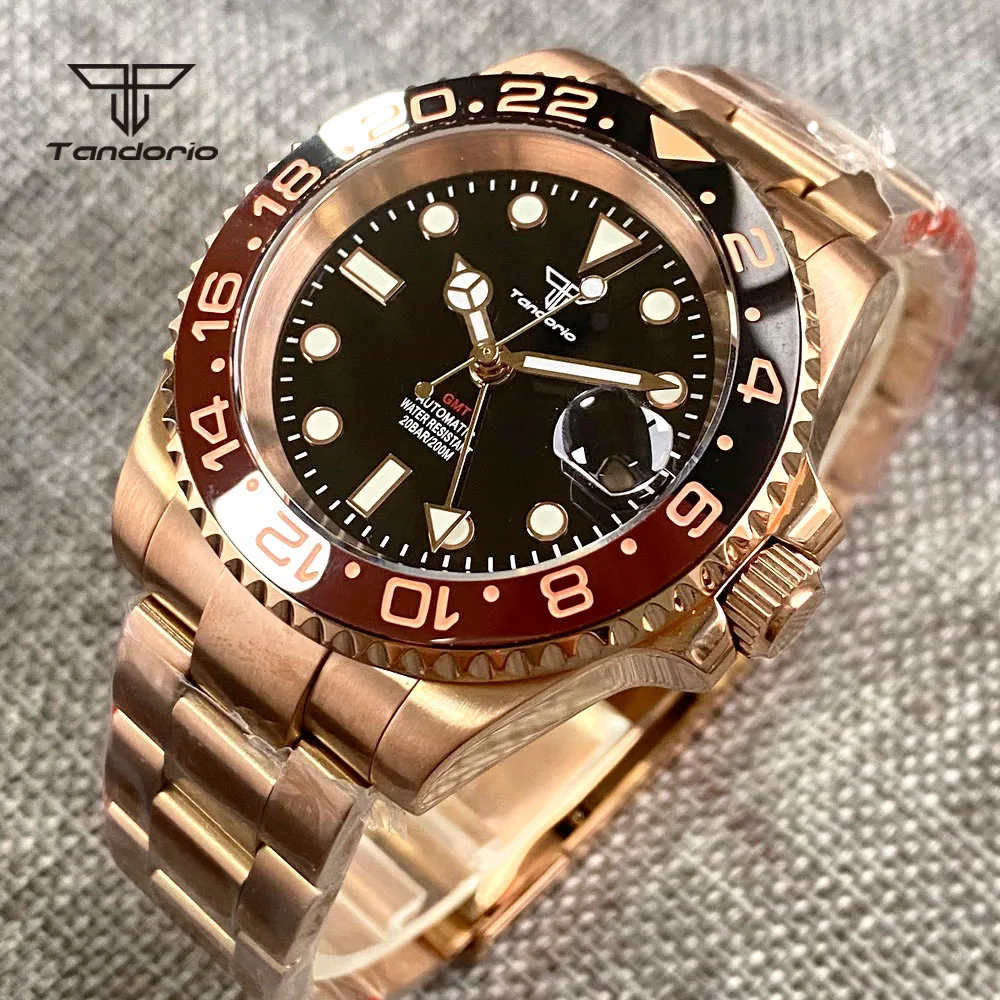
Cold War Innovations: Field Watches from Korea to Vietnam
The post-WWII era and subsequent Cold War conflicts pushed field watch design in new directions as warfare evolved from the set-piece battles of previous wars to counterinsurgency operations and specialized warfare. These changing tactical environments created demand for timepieces adapted to new challenges.
Vietnam Era Specialization
The Vietnam War presented unique challenges for military equipment. The hot, humid jungle environment proved particularly harsh on timepieces, leading to several innovations:
- The Benrus Type I and Type II watches, issued to special operations units including Navy SEALs, featured extra water resistance and unique cushion-shaped cases designed for underwater operations
- Hamilton field watches evolved with improved water resistance and more robust construction techniques
- Marathon began producing specialized military timepieces with highly focused design features for specific combat roles
Materials Revolution
The Cold War period saw significant experimentation with case materials beyond traditional steel:
- Plastic-cased watches from Stocker & Yale and Marathon reduced weight and eliminated reflective surfaces that could give away positions
- Composite cases offered improved shock absorption for airborne operations
- Advanced alloys provided better resistance to corrosion in maritime environments
Illumination Evolution
Safety concerns led to significant changes in luminous technology:
- Tritium replaced radium as the primary luminous material, offering safer self-illumination
- Later, tritium gas tubes provided consistent illumination without the radioactive dust risks
- Specialized dial layouts maximized luminous surface area for nighttime operations
This era represents a critical phase in the timeline of tactical field watch innovation, where specialized units with unique operational requirements drove the development of increasingly purpose-built timepieces. No longer were military watches designed as one-size-fits-all tools; instead, they became specialized equipment tailored to specific mission profiles and environments.
The Quartz Revolution in Military Timekeeping
The introduction of quartz technology in the late 1960s and its adoption by military forces in the 1970s represented a seismic shift in military timekeeping. This electronic revolution challenged the century-long dominance of mechanical watches in military service, offering compelling advantages that were impossible to ignore.
Precision and Reliability Advances
Quartz technology delivered immediate tactical advantages:
- Accuracy improved from seconds per day to seconds per month
- Battery life of 2-5 years eliminated daily winding requirements
- Reduced sensitivity to position and movement meant more consistent timekeeping
- Fewer moving parts translated to better shock resistance
- Lower production costs allowed for wider distribution of precise timepieces
The G10: Britain’s Quartz Standard
Perhaps no watch better exemplifies the military adoption of quartz technology than the British G10. First issued in 1980, the G10 (produced primarily by CWC) featured:
- Battery-powered quartz movement with accuracy of +/- 15 seconds per month
- Water resistance suitable for all standard military operations
- Fixed bars requiring NATO-style pass-through straps
- Minimalist black dial with white markings conforming to decades of field watch tradition
- Crown protection to prevent damage during active use
Despite its modern electronic heart, the G10 maintained the classic field watch aesthetic—proving that the core design principles established in earlier conflicts remained relevant even as technology evolved.
Digital Capabilities Expand
As quartz technology matured, military watches began incorporating digital displays and additional functions:
- Casio G-Shock watches found unofficial adoption due to their extreme durability
- Digital chronograph functions enhanced timing capabilities
- Multiple time zones could be tracked simultaneously
- Countdown timers and alarms added tactical utility
- Backlit displays complemented traditional luminous markers
These quartz-powered field watches proved themselves as rugged watches for extreme conditions, often exceeding the performance of their mechanical predecessors in harsh environments. However, rather than replacing mechanical watches entirely, quartz technology simply added another option for military timekeeping, with each technology offering distinct advantages for different operational requirements.
Defining Elements of the True Military Field Watch
Through decades of battlefield evolution and despite technological changes, certain defining characteristics have remained consistent in genuine military field watches. These elements transcend specific eras or technologies, representing the core DNA that separates authentic field watches from civilian-focused designs.
Dial Design: The Science of Instant Readability
The dial of a true field watch emphasizes rapid time reading above all else:
- High contrast between dial face and markings—typically black background with white numerals
- Arabic numerals for all hour markers (no Roman numerals or decorative indices)
- 24-hour scale (military time) typically printed in smaller numerals inside the main hour track
- Minute markers clearly delineated at 5-minute intervals minimum
- Triangle marker at 12 o’clock for instant orientation
- Luminous material on all essential markers and hands
This configuration ensures that time can be read accurately in a split second, even under stress or in poor visibility conditions.
Case Construction: Substance Over Style
Field watch cases prioritize protection of the movement over aesthetics:
- Mid-size dimensions (typically 36-40mm) balancing visibility with wearability under equipment
- Minimal polishing—usually brushed or bead-blasted finishes to eliminate reflections
- Crown protection to prevent damage during active movement
- Solid case backs secured with multiple screws or threaded design
- Water resistance appropriate to expected operational conditions
- Minimal case protrusion beyond the wrist to prevent snagging on equipment
Crystal Materials: Protection First
Evolution of crystal materials shows a consistent emphasis on durability:
- Early models used acrylic crystals that could crack but rarely shattered
- Mid-century models introduced mineral glass for improved scratch resistance
- Modern specifications often require sapphire for maximum durability
- All prioritize resistance to shattering that could disable the watch or injure the wearer
Movement Priorities: Reliability Over Refinement
Whether mechanical or quartz, military watch movements emphasize:
- Shock resistance through systems like Incabloc or Kif
- Accuracy maintained across temperature extremes
- Serviceability in field conditions when possible
- Antimagnetic properties to resist equipment interference
These defining elements ensure that field watches deliver their primary function—accurate timekeeping—under the field watch functionality needed in combat zones. This unwavering focus on practical performance rather than decorative embellishment gives authentic military field watches their distinctive character and explains their enduring appeal.
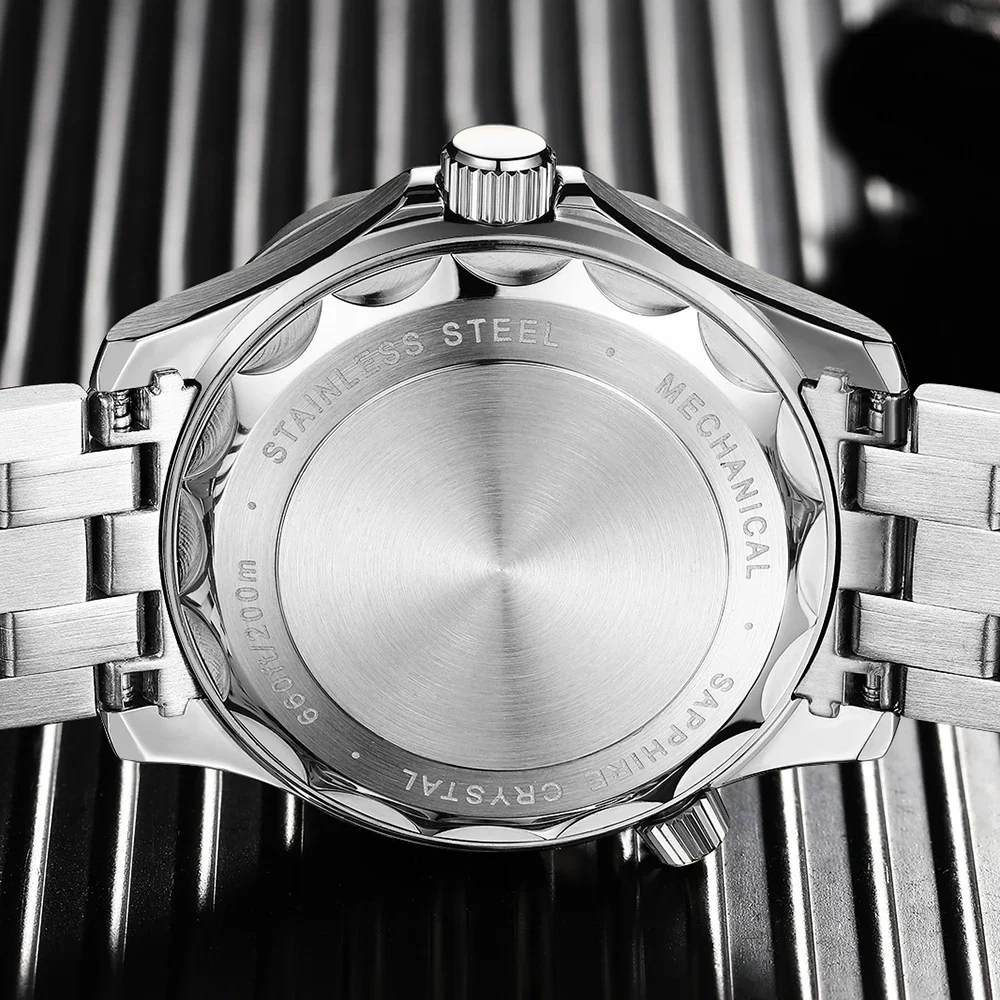
From Battlefield to Mainstream: Military Influence on Civilian Watches
The transition of field watches from purely military equipment to popular civilian accessories represents one of the most successful crossovers of military design into mainstream culture. This journey from battlefield to boutique didn’t happen overnight but evolved through several key phases.
Post-War Adoption
After World War II and subsequent conflicts, returning veterans continued wearing their service timepieces in civilian life for practical reasons:
- They already owned these robust, reliable watches
- The watches had proven their durability under extreme conditions
- Many had developed personal attachments to these faithful companions from their service
Watchmakers noticed this trend and began producing civilian versions of military designs, maintaining core features while adapting them for everyday wear. Hamilton’s transformation from military supplier to consumer brand exemplifies this evolution, with their Khaki Field collection directly drawing on their military heritage.
Utility Becomes Style
By the 1970s and 1980s, the utilitarian aesthetic of field watches had become fashionable in its own right:
- The no-nonsense design projected an image of ruggedness and authenticity
- The legibility and simplicity offered practical benefits for civilian activities
- The military heritage provided a sense of connection to historical significance
This period also saw the widespread adoption of the NATO strap—originally developed for British military watches—as a popular accessory for all types of timepieces, further cementing the military influence on civilian watch culture.
Modern Premium Interpretations
Today, the field watch aesthetic has been embraced across the entire price spectrum of the watch industry:
- Entry-level brands offer affordable field watches that maintain the classic design language
- Mid-range manufacturers like Hamilton and Marathon produce authentic modern field watches
- Even luxury brands like IWC and Breitling offer premium interpretations of the field watch concept
The underlying reliability of automatic watches in military service and performance has earned them a place in civilian wardrobes. Their functionality, combined with their historical significance, continues to attract watch enthusiasts who appreciate purposeful design with a genuine heritage.
Collecting Vintage Military Field Watches: Key Considerations
The market for authentic military-issued timepieces has grown significantly as collectors increasingly appreciate their historical significance, purposeful design, and relative affordability compared to other vintage watches. However, navigating this specialized collecting area requires understanding several important factors.
Authentication Essentials
Genuine military-issued watches typically feature specific markings that help verify their authenticity:
- Military property markings (like the British broad arrow or U.S. property marks)
- Issue numbers engraved on case backs (often including year of issue and branch code)
- NATO stock numbers or similar procurement identifiers
- Contract specification references (like MIL-W-46374)
The absence of these markings doesn’t automatically indicate a fake—many watches were “sterile” by design—but their presence, when correct for the period, strongly supports authenticity.
Common Condition Issues
Vintage military watches frequently show evidence of their service history:
- Replaced hands and dials due to radioactive material remediation
- Case polishing during military refurbishment
- Replacement crowns and crystals from field servicing
- Service department markings inside case backs
Unlike most collector watches where originality is paramount, these service modifications often tell part of the watch’s story and may not significantly impact collectibility when properly documented.
Value and Accessibility
Military watches offer entry points at various budget levels:
- Vietnam-era and later quartz models often remain relatively affordable ($300-1000)
- WWII American A-11 and similar watches occupy a mid-range ($1000-3000)
- Rare special forces models or complete “Dirty Dozen” sets command premium prices
Collectors should begin by researching specific models thoroughly, understanding what correct examples look like, and learning to recognize period-appropriate components before making significant investments in this fascinating but complex collecting category.
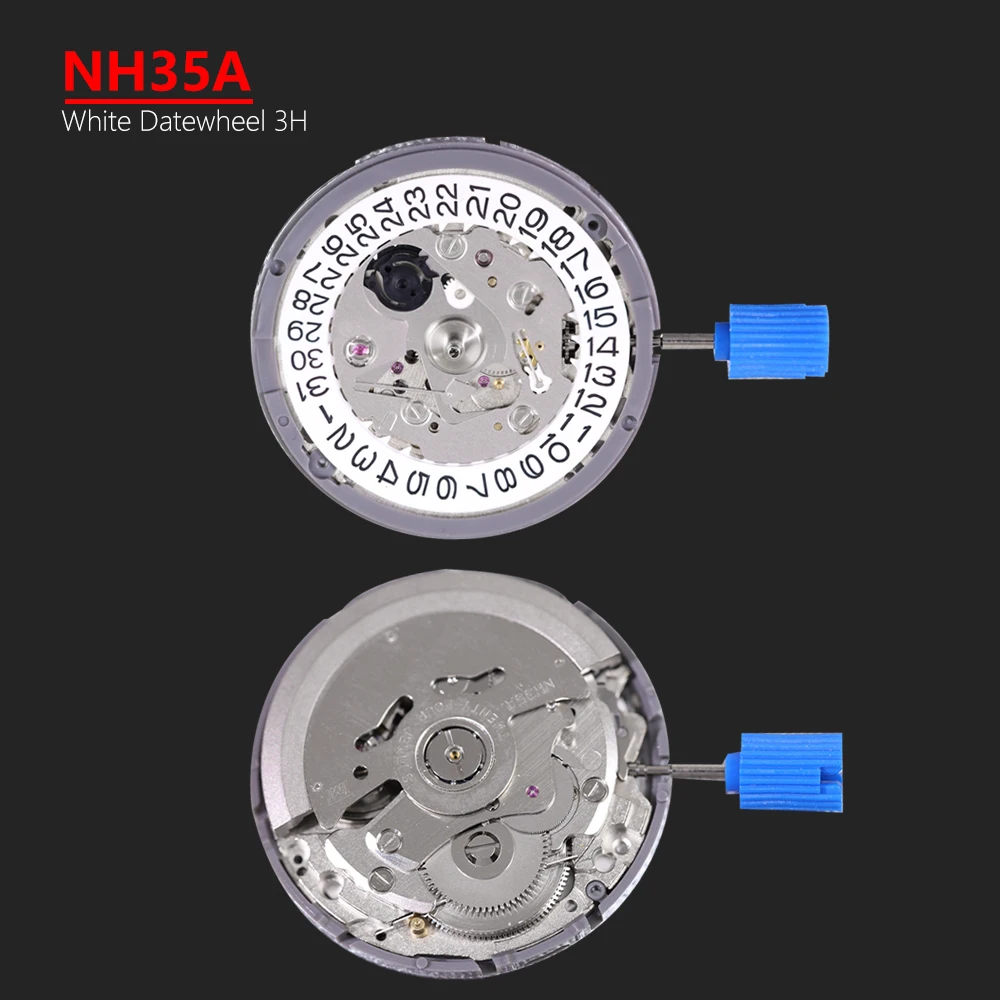
Modern Field Watches: Heritage Meets Innovation
Today’s field watches represent a fascinating blend of traditional military design principles and modern horological advancements. This segment of the watch market offers options ranging from faithful historical reproductions to contemporary interpretations that maintain the field watch spirit while incorporating modern materials and technology.
The Contemporary Field Watch Landscape
Modern manufacturers approach the field watch category in several distinct ways:
- Heritage reissues that faithfully recreate historical models with minimal changes
- Modern interpretations that maintain classic aesthetics while upgrading materials
- Tactical evolutions that push the concept forward with advanced features
- Luxury crossovers that elevate the field watch concept with fine finishing and premium movements
Brands like Hamilton, Marathon, and CWC maintain close ties to their military heritage, while companies like Smith’s and Timex offer accessible interpretations of the classic field watch formula.
Modern Advancements in Field Watch Design
Today’s field watches benefit from significant technological improvements:
- Improved water resistance (200m+ is now common versus 30-50m historically)
- Scratch-resistant sapphire crystals replacing acrylic and mineral glass
- Brighter and longer-lasting luminous materials like Super-LumiNova
- More robust automatic movements with enhanced shock protection
- Advanced case materials including titanium and hardened steel alloys
These improvements maintain the field watch’s core identity while enhancing its performance capabilities far beyond what was possible with vintage examples.
Finding the Right Modern Field Watch
When selecting a contemporary field watch, consider these factors based on your needs:
- Movement type: Automatic movements require no batteries but need regular wear, while quartz offers superior accuracy and lower maintenance
- Size: Modern field watches often come in larger sizes than historical models
- Water resistance: Consider your activity level when evaluating this specification
- Illumination quality: Critical if you’ll rely on your watch in low-light conditions
Military Inspired Automatic Watches, Rugged Automatic Watches, Tactical Automatic Watches
Price range: $852.14 through $994.60 Select options This product has multiple variants. The options may be chosen on the product pageBronze Automatic Watches, Military Inspired Automatic Watches, Professional Spec Dive Watches
Price range: $1,442.21 through $1,442.82 Select options This product has multiple variants. The options may be chosen on the product pageClassic Pilot Watches, Military Inspired Automatic Watches
$561.00 Select options This product has multiple variants. The options may be chosen on the product pageRugged Automatic Watches, Unique Automatic Watches
Price range: $228.96 through $231.10 Select options This product has multiple variants. The options may be chosen on the product pageClassic Field Watches, Military Inspired Automatic Watches
Price range: $280.87 through $338.51 Select options This product has multiple variants. The options may be chosen on the product pageAutomatic Skeleton Watches, Military Inspired Automatic Watches, Unique Automatic Watches
$191.88 Select options This product has multiple variants. The options may be chosen on the product page
Our Sharp Aspect collection includes numerous automatic field military watches, classic field watches, military-inspired automatic watches, rugged automatic watches, and tactical automatic watches that honor this rich tradition while incorporating modern engineering advances.
Why Field Watches Endure in the Digital Age
In an era dominated by smartwatches, smartphones, and digital devices that offer seemingly unlimited functionality, the continued popularity of traditional field watches might seem surprising. Yet these simple, purpose-built timepieces remain not just relevant but increasingly sought after. This endurance speaks to qualities that transcend mere timekeeping.
The field watch represents a direct connection to a rich heritage of purposeful design. Unlike devices that become obsolete within a few years, a well-made field watch follows design principles proven over a century of use in the most demanding conditions imaginable. This longevity stands in stark contrast to our disposable digital culture.
Practical benefits also ensure the field watch’s continued relevance. A quality mechanical field watch requires no charging, functions without connectivity, and performs reliably in environments where electronics might fail. Its analog display allows for instant time reading without button presses or screen activations, and its simple construction means it can be repaired rather than replaced when issues arise.
Perhaps most significantly, field watches represent a counterpoint to the constant connectivity and complexity of modern life. Their singular purpose—telling time accurately and legibly—offers a refreshing simplicity. The deliberate winding of an automatic movement creates a personal connection missing from digital alternatives.
As we look to the future, field watches will likely continue evolving while maintaining their core identity—incorporating advanced materials and manufacturing techniques while preserving the design language that has served them well for over a century. In doing so, they’ll remain what they’ve always been: reliable tools that tell time under any circumstance, with a clarity of purpose increasingly rare in our complex world.

